US President Donald Trump slams new “witch hunt” plans by leading Democrats to begin impeachment
After more than two years of jousting over President Donald Trump’s conduct, the ground suddenly shifted in Congress and a move toward impeachment broke free of constraints. This is what happens next.
News
Don't miss out on the headlines from News. Followed categories will be added to My News.
Democrat leaders have officially commenced impeachment proceedings against US President Donald Trump, a historic move with the potential to ultimately remove him from office.
House Speaker Nancy Pelosi said Mr Trump had violated the law and the constitution by asking the Ukrainian president to investigate the actions of his political rival, Democrat presidential candidate Joe Biden, and his son.
Mr Trump has shrugged off the controversy, admitting in recent days that he discussed the Bidens with Ukrainian President Volodymyr Zelensky but arguing that he had done nothing wrong.
An official impeachment inquiry is being launched into US President Donald Trump. At a news conference, the US House Speaker Nancy Pelosi said: "The president must be held accountable. No one is above the law."
— Sky News (@SkyNews) September 24, 2019
Read more here: https://t.co/767stTKnhE pic.twitter.com/0lq8yzV6Q1
There are claims Mr Trump further threatened to withhold US aid to Ukraine if the Bidens were not investigated.
Ms Pelosi said that by asking a foreign government to help him politically, and by refusing to release information about a whistleblower complaint involving the controversy, Mr Trump had “betrayed the constitution”.
“Therefore today, I am announcing the House of Representatives moving forward with an official impeachment inquiry,” Ms Pelosi said.
“The president must be held accountable, no one is above the law.”

Mr Trump slammed the move as a new “witch hunt”. “It’s just a continuation of the witch hunt,” Mr Trump said at the United Nations in New York.
Mr Trump said he would release a transcript of his call with Ukrainian president on Wednesday local time, which he said would clear him of charges he pushed him to investigate leading Democrat president candidate Joe Biden, and his son Hunter.
PRESIDENTIAL HARASSMENT!
— Donald J. Trump (@realDonaldTrump) September 24, 2019
They never even saw the transcript of the call. A total Witch Hunt!
— Donald J. Trump (@realDonaldTrump) September 24, 2019
“You will see it was a very friendly and totally appropriate call,” Mr Trump said.
Secretary of State Pompeo recieved permission from Ukraine Government to release the transcript of the telephone call I had with their President. They don’t know either what the big deal is. A total Witch Hunt Scam by the Democrats!
— Donald J. Trump (@realDonaldTrump) September 24, 2019
The spectre of impeachment, the process through which a US president can be removed from office if convicted of “treason, bribery or other high crimes and misdemeanours”, has hung over the Trump presidency since its earliest days.
— Donald J. Trump (@realDonaldTrump) September 24, 2019
Ms Pelosi has until now resisted calls from Democrats that Mr Trump should be impeached. Half the House of Representatives would need to vote for impeachment, which would then move to the Senate, where a two-thirds vote would be needed for proceedings to commence.
Former Vice President Joe Biden on Tuesday also declared Mr Trump would leave Congress “no choice” but to seek impeachment, should the President refuse to comply with its requests.
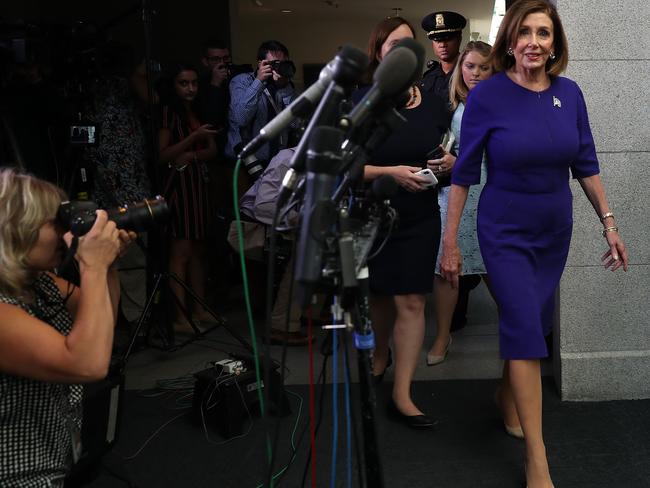
“We have a President who believes he can do anything and get away with it,” he said.
“Pressuring the leader of another nation to investigate a political opponent — to help win his election is not the conduct of an American President.
“The allegation that he blocked hundreds of millions of dollars in Congressionally approved aid to another country unless it agreed to smear his political opponent is not the conduct of an American President.”

Mr Biden has been dogged by his son’s connections to Ukraine, which Mr Trump has long criticised. Hunter Biden was on the board of a Ukrainian gas company at the same time that the then Vice President was in charge of the Obama administration’s diplomatic relationship with Kiev.
There has been no evidence shown of corruption.
While impeachment proceedings have the potential to strip the presidency from Mr Trump, they are a huge political risk for Democrats. An unsuccessful bid would almost certainly propel the Republican leader back into a second term at next year’s election, further energising his base who are frustrated by constant investigations and allegations of impropriety from his opponent.
Trump 2020 campaign manager Brad Parscale described the impeachment strategy as “misguided”.
“Democrats can’t beat President Trump on his policies or his stellar record of accomplishment, so they’re trying to turn a Joe Biden scandal into a Trump problem,” Mr Parscale said.
“The misguided Democrat impeachment strategy is meant to appease their rabid, extreme, leftist base, but will only serve to embolden and energise President Trump’s supporters and create a landslide victory for the President.”

HOW THE GROUND SHIFTED ON IMPEACHMENT
After more than two years of jousting over President Donald Trump’s conduct, the ground suddenly shifted in Congress and a move toward impeachment broke free of constraints.
That does not mean the path ahead is all set.
On Wednesday morning House Speaker Nancy Pelosi — who for months had been a powerful brake on restive Democrats wanting to impeach Trump — launched a formal inquiry toward that end, accusing the president of “betrayal of his oath of office,” betrayal of national security and betrayal of the integrity of American elections.
Here’s a look at the matter and what’s known about what happens next:
NEXT STEPS
The House Judiciary Committee will be the panel responsible for recommending articles of impeachment against Trump if the inquiry leads it to do so. Already, six House committees have been investigating various aspects of alleged impropriety by the president. They will continue to investigate, but on an expedited basis, though with no specific deadline.
If the Judiciary panel backs impeachment articles, the matter goes to the full House for a vote. Democrats control the House and its committees.

If a majority of the full House votes for impeachment, the matter goes to the Senate, which is responsible for holding a trial, overseen by the U.S. Supreme Court chief justice.
It takes a two-thirds vote in the Senate to force a president from office — a daunting challenge for Democrats if the effort goes that far, given Republican control of that chamber.
Impeaching a president is often misunderstood to mean his removal. It actually means the House has voted to bring one or more articles of impeachment and send the process forward. No president has been ousted by impeachment.
DEMOCRATS BREAK THEIR IMPASSE
Some Democrats in Congress have long wanted to kick-start the constitutional process to remove Trump, despite the slim odds of success. But they lacked a critical mass and Pelosi’s support.
Trump’s machinations to avoid culpability from the Russia investigation fed into their push, but that inquiry came to an indistinct conclusion, with troubling episodes of presidential behaviour uncovered by special counsel Robert Mueller but no charges recommended for obstructing justice or conspiring with Moscow in its audacious efforts to tip the 2016 U.S. election to Trump.
Trump’s pre-election payment to a porn actor to maintain her silence and apparent Trump Organization profiteering from his presidency also fuelled impeachment sentiment from a segment of the party. But it took a whistleblower’s still-secret complaint about Trump’s dealings with Ukraine to change the landscape.
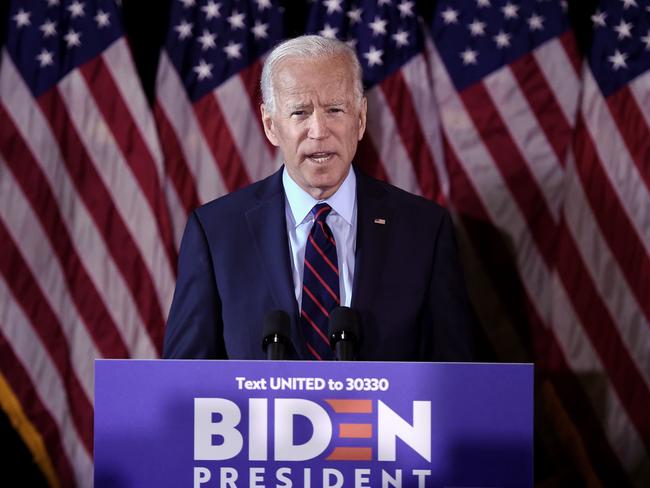
In a nutshell: There’s little doubt Trump pressed Ukraine to conduct a corruption investigation of Democratic presidential contender Joe Biden and his son — the president has defiantly stated that he did.
He also acknowledged that days before a phone conversation with Ukraine’s leader in July, he ordered military aid to Ukraine to be frozen.
The episode raises the possibility that a president used the power of his office to get a foreign government to help him win reelection. Trump denies doing or saying anything improper. But wavering Democrats, many of them freshmen from districts where Trump has enjoyed broad support, dropped their reluctance to proceed.
WHAT HAS CHANGED
Pelosi’s buy-in on impeachment proceedings is a huge advance for advocates of that approach after the proceedings in the Judiciary Committee were mostly seen as going nowhere.
As well, Democrats believe the focus on Trump’s dealings with the Ukrainian leader could resonate more than the Mueller report did. In terms of congressional process, not much changes, at least at first.
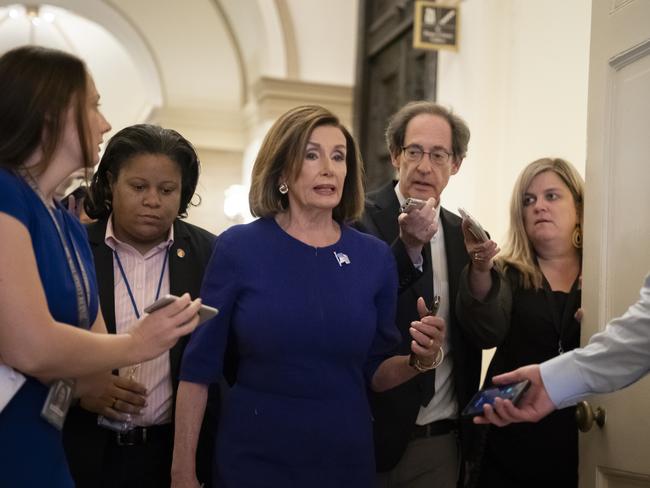
The judiciary panel had already begun impeachment hearings and had asked other committees for input.
And it’s not clear that Pelosi’s “expedited” timeline will move things along any more quickly. The committee chairman, Rep. Jerrold Nadler of New York, has said he wants to make a decision on whether to recommend articles of impeachment by the end of the year.
THE LAST TIME THIS HAPPENED …
You can find partisans during almost every administration who think the president of the opposing party should be thrown out of office between elections. But there hasn’t been a serious effort to do that since the impeachment of Bill Clinton.
In 1998 and 1999, the House under Republican control pursued the impeachment of the Democratic president, primarily based on matters arising from his relationships with women outside his marriage.
The House approved an allegation that Clinton “wilfully provided perjurious, false and misleading testimony” before independent counsel Kenneth Starr’s grand jury investigation. And it voted to bring forward the accusation that he “prevented, obstructed and impeded the administration of justice.” The Republican-controlled Senate acquitted him.
WORDS FROM THE CONSTITUTION
The Constitution gives the House “the sole power of impeachment” and the Senate “the solepower to try all impeachments.” And it dictates the removal from office of an impeached president who is convicted by the senate of “treason, bribery, or other high crimes and misdemeanours.” It is left to Congress to define such terms.
WHAT IS IMPEACHMENT
The push among Democrats in the US Congress to impeach President Donald Trump for abuse of power is gaining momentum.
Nancy Pelosi, the Democratic speaker of the House of Representatives, has shown little appetite for impeachment during the first three years of Trump’s tumultuous presidency.
But the political scandal over Trump’s attempt to seek dirt from Ukraine on his potential 2020 Democratic presidential rival Joe Biden may be the last straw.
More than 150 of the 235 Democratic members of the 435-seat House support impeachment or the opening of an inquiry into removing the president.
The impeachment process, officially launched against President Donald Trump, includes several steps to take place in both chambers of the United States Congress pic.twitter.com/eHKfyLTYdb
— AFP news agency (@AFP) September 24, 2019
No House Republicans have come out in favour of impeachment and Republicans currently control the Senate, making conviction unlikely.
Trump on Tuesday denounced calls for his impeachment as “ridiculous” and “nonsense.”
“It’s a witch hunt,” he said.
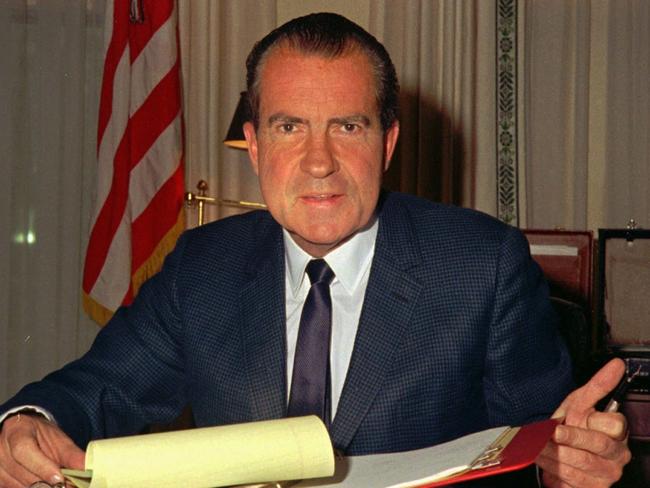
No president has been ousted from office by impeachment, but even the threat can bring one down — Richard Nixon resigned in 1974 to avoid certain removal in the Watergate scandal.
Two presidents beat the process: the House formally impeached Andrew Johnson in 1868 and Bill Clinton in 1998, but in both cases they were acquitted in the Senate.
— How does it work? —
If lawmakers believe a president is guilty of what the US Constitution calls “treason, bribery, or other high crimes and misdemeanours,” the process begins in the House of Representatives.
Any member can introduce an impeachment resolution, which like any other bill would be sent to a committee, most likely the House Judiciary Committee.
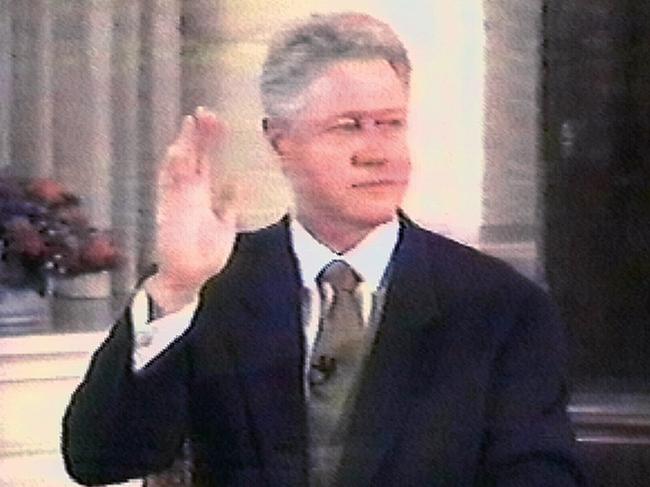
The committee can review the evidence it receives, or carry out an investigation itself.
If the evidence is strong enough, the committee crafts articles of impeachment — criminal charges — and sends them to the full House.
The House can pass the articles by a simple majority vote, “impeaching” the president.
The articles then go to the Senate, where a trial takes place, with representatives from the House acting as prosecutors and the president and his attorneys presenting his defense.
The chief justice of the Supreme Court presides over the trial in the Senate. The 100-member Senate then votes on the charges, with a two-thirds majority necessary to convict and remove the president.
If the president is convicted, the vice president would then take over the White House.
— What kind of charges do presidents face? —
The accusations have to meet the constitutional standard of “high crimes or misdemeanours,” which is very broad.
In the cases of Clinton and Nixon, independent prosecutors conducted extensive investigations and amassed evidence to support criminal charges.

Nixon was accused of obstruction of justice, abuse of power, and contempt. Clinton, in the Monica Lewinsky scandal, was accused of perjury and obstruction. Trump could conceivably face charges of abuse of power for using his office to pressure Ukraine to conduct a politically-motivated investigation of Joe Biden and his son, Hunter, who had business dealings in Ukraine.
Special Counsel Robert Mueller, in the Russia election meddling investigation, also detailed multiple instances of alleged obstruction of justice by Trump that could arguably support charges.
— Is it about law or politics? —
Both. Given the momentous nature of an effort to remove the president, a clear crime with strong evidence — stronger than for an average citizen — is required.
At the same time, it is very much a political decision.
In past impeachments, support and opposition ran along party lines, though in Nixon’s case the offences were so egregious that Republican backing for him quickly disintegrated.

In Democrat Clinton’s case, Republicans controlled the entire Congress. But when impeachment charges went to the Senate, the 45 Democratic Senators stayed united to block a two-thirds vote for conviction.
With Trump, Democrats are divided for political reasons.
Pelosi has argued that impeaching Trump would go nowhere in the Republican-controlled Senate and could damage the party’s effort to win full control of the Congress and the White House in the November 2020 elections.
Others in the party say Trump needs to be held accountable — that Democratic voters demand it.
A brief look at past presidential impeachment proceedings:
BILL CLINTON: The Republican-controlled House voted in October 1998 to begin impeachment proceedings against Clinton after months of controversy over his relationship with White House intern Monica Lewinsky.
That vote was triggered by two rounds of testimony given by Clinton earlier in the year. In January, he denied having a sexual relationship with Lewinsky; in August, under questioning from independent counsel Kenneth Starr before a federal grand jury, he testified that he engaged in an inappropriate relationship with Lewinsky.

Clinton was impeached on Dec. 19, 1998, on the grounds of perjury to a grand jury and obstruction of justice. A Senate trial against Clinton commenced on Jan. 7, 1999, and unfolded over four weeks, with Chief Justice William Rehnquist presiding.
On Feb. 12, the Senate voted to acquit Clinton on both charges — falling far short of the 67 votes needed to convict. Only 45 senators voted for conviction on the perjury charge, and 50 for the obstruction charge.
RICHARD NIXON: The House initiated an impeachment process against Nixon in February 1974, authorising the Judiciary Committee to investigate whether grounds existed to impeach him of high crimes and misdemeanours. The charges mostly related to Watergate- shorthand for the 1972 break-in at the Democratic National Committee headquarters and the Nixon administration’s attempts to cover up its involvement.
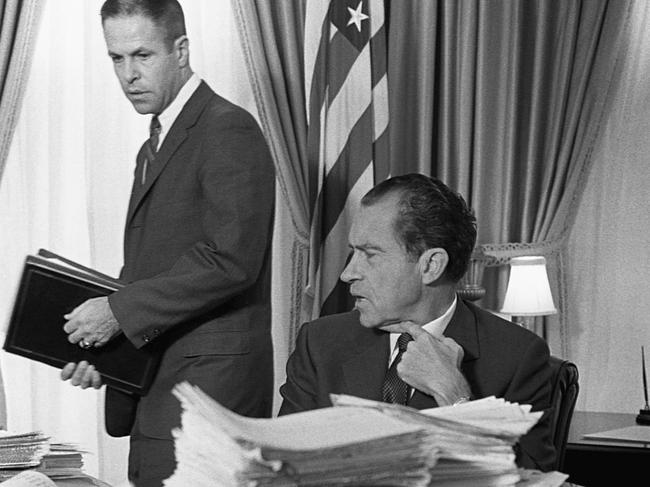
In July 1974, the Judiciary Committee approved three articles of impeachment against Nixon — for obstruction of justice, abuse of power and contempt of Congress.
Before the full House could vote on the articles of impeachment, a previously undisclosed audiotape was released that made clear Nixon had a role in the cover-up. He resigned from office on Aug. 9, 1974.
ANDREW JOHNSON: Johnson’s impeachment in 1868 was the culmination of a bitter dispute between the president and the Republican-controlled House over Reconstruction following the Civil War.
The specific trigger for impeachment was Johnson’s attempt to fire Secretary of War Edwin Stanton, who favoured a tougher approach than Johnson toward the defeated South. Nine of 11 impeachment articles concerned the head of the War Department.
The House voted to impeach Johnson on March 3, 1868. Three days later, the Senate convened a formal impeachment trial, with Supreme Court Chief Justice Salmon P. Chase presiding.
On May 16, after an often-stormy trial, the Senate failed to convict Johnson on one of the 11 articles, falling short of the necessary two-thirds majority by one vote. After a 10-day recess, two more votes failed by the same margin, and the trial was adjourned.


